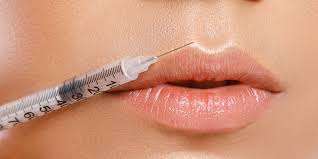Botox is one of the most widely recognized treatments in the cosmetic industry. Frequently associated with reducing wrinkles and fine lines, it has garnered significant attention from individuals hoping to address specific cosmetic concerns. Despite its popularity, some people may hesitate to pursue Botox due to confusion or unanswered questions.
What Is Botox?
Botox is a purified form of botulinum toxin. It is a neurotoxin used in small, controlled doses for cosmetic or therapeutic applications. Within the cosmetic field, this treatment is predominantly used to temporarily reduce the appearance of dynamic wrinkles, which are lines formed through repetitive facial movements such as smiling, frowning, or squinting.
Unlike static wrinkles, which are caused by a loss of elasticity in the skin, dynamic wrinkles result from muscle contractions over time. Botox is widely utilized to soften these features, promoting a smoother and rejuvenated look. It has also been approved for various medical conditions, including migraines and muscle spasms.
How Does It Work?
Botox works by targeting the communication between nerves and muscles. When the neurotoxin is administered, it blocks signals from the nerves to the muscles, preventing the muscles from contracting. This temporary paralysis relaxes the muscle activity responsible for the creation of dynamic wrinkles. It’s worth noting that Botox does not directly alter the skin’s surface. It functions beneath the skin to address the root cause of dynamic wrinkles. The effects of Botox are temporary, generally lasting three to four months, after which muscle activity resumes gradually.
What Does the Process Look Like?
The process of receiving Botox treatments typically begins with a consultation with a licensed professional. During this consultation, you may discuss your cosmetic goals and expected outcomes while providing a medical history to determine eligibility for the procedure. A professional assessment may also include identifying treatment areas and thoroughly explaining what Botox can and cannot achieve.
On the day of treatment, the injections are administered using a fine needle. The session is relatively quick, often taking only a few minutes. Due to the minimally invasive nature of Botox, anesthesia is generally unnecessary.
What Should You Expect Afterwards?
After receiving Botox, it is common to experience minor side effects at the injection sites. These may include slight redness, swelling, or bruising, which typically resolve within a few days. Your provider may also provide aftercare instructions, such as avoiding strenuous physical activity or refraining from lying down for several hours.
Visible changes may begin to appear within a few days, with full results taking up to two weeks. The treated muscles will gradually relax, softening the appearance of wrinkles in the targeted areas. While results vary, the beneficial effects of Botox generally last three to four months. After this period, many patients schedule maintenance visits to sustain their desired look
Ask Further Questions With a Cosmetic Specialist
For individuals curious about Botox and its applications, consulting with an experienced cosmetic specialist is an excellent way to address specific concerns. Specialists can provide tailored advice, making sure you choose treatment that aligns with your personal goals. With proper education and professional guidance, Botox can serve as a versatile option for achieving a refreshed appearance.
- FREHF – The Revolutionary Future Of Human-Centered Technology!
- Adsy.Pw/Hb3 – Boost Your SEO And Drive More Traffic!
- Fitness Based Vacations By Timeshealthmage.com!
- TimesHealthMag Tips For Improving Sleep Quality – Expert Advice For Better Rest!
- How TimesHealthMage Helps Improve Your Lifestyle Habits!


Leave a Reply